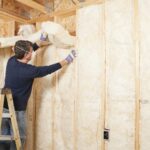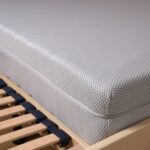Fiberglass is a popular material used in various industries such as construction, automotive, and aerospace due to its strength, durability, and insulating properties. However, there has been concern about whether fiberglass contains asbestos, a harmful mineral that can cause serious health issues when inhaled.
Asbestos is known to cause lung cancer, mesothelioma, and other respiratory diseases.
Despite their similar appearance, fiberglass and asbestos are two different materials. Fiberglass is made from fine glass fibers that are woven into a fabric or used as a filler material, while asbestos is a naturally occurring mineral that is mined from the earth.
Although fiberglass is not asbestos, there have been cases where asbestos fibers were found in fiberglass products due to contamination during manufacturing or installation. It is important to understand the differences between these two materials and the potential risks associated with them.
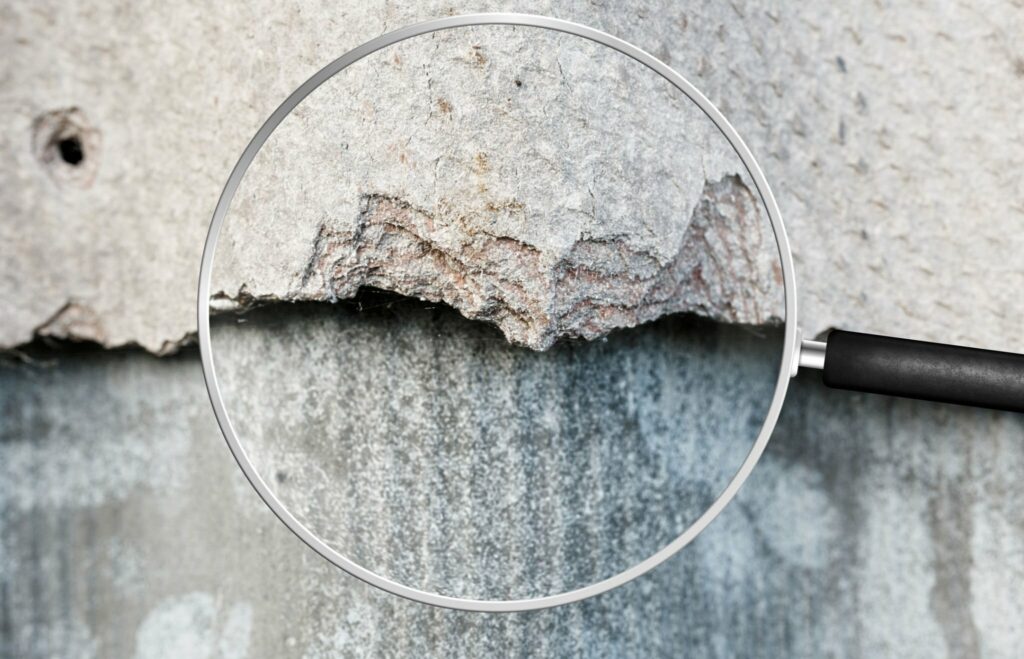
Understanding Fiberglass
Fiberglass is a material made of tiny glass fibers woven together to form a mat or fabric. It is a popular choice in many industries due to its strength, durability, and insulating properties.
One of the main advantages of fiberglass is that it is lightweight and easy to work with, making it a popular choice in construction and manufacturing. It is commonly used in insulation, roofing, and as reinforcement in plastics and composites.
Fiberglass also has excellent thermal and acoustic insulation properties, making it a popular choice for soundproofing and insulation in buildings and vehicles.
In terms of health concerns, fiberglass is generally considered safe to handle and use. However, it is important to take proper precautions when working with fiberglass to avoid inhaling the tiny glass fibers, which can cause irritation to the skin, eyes, and respiratory system.
Overall, fiberglass is a versatile and useful material that has many applications in various industries. With proper handling and precautions, it can be a safe and effective choice for insulation and reinforcement.
What is Asbestos
Asbestos is a naturally occurring mineral that has been used in various industries due to its unique properties. It is composed of thin, fibrous crystals that are resistant to heat, fire, and chemicals, making it an ideal material for insulation, roofing, and other construction materials.
However, asbestos is also known to be highly toxic when its fibers are inhaled. These fibers can cause serious health problems, including lung cancer, mesothelioma, and asbestosis. As a result, the use of asbestos has been heavily regulated in many countries, and some have banned it entirely.
Asbestos can be found in many older buildings, especially those constructed before the 1980s. It may still be present in insulation, ceiling tiles, floor tiles, and other materials. If these materials are damaged or disturbed, the fibers can become airborne and pose a risk to anyone nearby.
It is important to note that not all fiberglass products contain asbestos. In fact, fiberglass is a completely different material that is made from glass fibers rather than mineral fibers.
However, some older fiberglass products may have been made with asbestos, so it is important to take proper precautions when working with any older building materials.
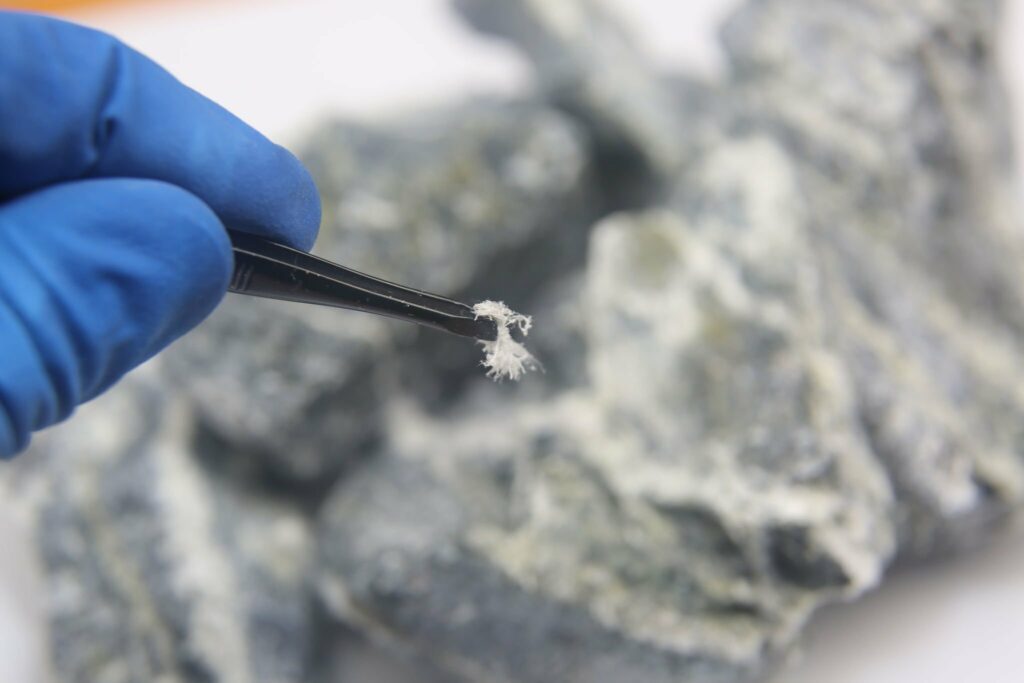
Differences Between Fiberglass and Asbestos
Fiberglass and asbestos are two materials that are often compared due to their similar properties and uses. However, there are several differences between these two materials that are important to understand.
Composition
Fiberglass is made from tiny fibers of glass that are woven together to form a fabric. Asbestos, on the other hand, is a naturally occurring mineral that is mined from the earth.
Health Risks
One of the main differences between fiberglass and asbestos is the health risks associated with each material. Asbestos has been linked to several serious health conditions, including lung cancer, mesothelioma, and asbestosis.
Fiberglass, on the other hand, is generally considered to be safe and does not pose a significant health risk.
Uses
Fiberglass and asbestos are both used in a variety of applications, but they are typically used for different purposes. Fiberglass is commonly used in insulation, as well as in the production of boats, cars, and other products that require a strong and lightweight material.
Asbestos was once widely used in insulation, but it has since been banned due to its health risks. It is still used in some products, such as brake pads and gaskets, but these uses are heavily regulated.
Appearance
Fiberglass and asbestos can be difficult to distinguish from one another based on appearance alone. Both materials are typically white or gray and have a fibrous texture. However, asbestos fibers are longer and thinner than fiberglass fibers, and they are more likely to break apart into smaller particles that can be inhaled.
In conclusion, while fiberglass and asbestos share some similarities, there are several important differences between these two materials. It is important to understand these differences in order to use these materials safely and effectively.
Common Uses of Fiberglass
Fiberglass is a versatile material that has been used in various industries for many years. It is made of fine glass fibers that are woven together to create a strong and durable material. Here are some of the common uses of fiberglass:
In Construction
Fiberglass is widely used in the construction industry for its strength, durability, and insulation properties. It is commonly used in the following applications:
- Roofing: Fiberglass is used to make shingles, panels, and other roofing materials. It is lightweight, easy to install, and provides excellent insulation against heat and cold.
- Insulation: Fiberglass is used as insulation in walls, ceilings, and floors. It helps to keep buildings warm in the winter and cool in the summer, reducing energy costs.
- Pipes and tanks: Fiberglass is used to make pipes and tanks for storing water, chemicals, and other liquids. It is corrosion-resistant, which makes it ideal for use in harsh environments.
In Automotive Industry
Fiberglass is also widely used in the automotive industry for its lightweight and strength. It is commonly used in the following applications:
- Body panels: Fiberglass is used to make body panels for cars, trucks, and other vehicles. It is lightweight and durable, which helps to improve fuel efficiency and reduce emissions.
- Engine components: Fiberglass is used to make engine components such as air intake systems, valve covers, and exhaust systems. It is heat-resistant and can withstand high temperatures, making it ideal for use in engines.
- Soundproofing: Fiberglass is used as a soundproofing material in cars and trucks. It helps to reduce noise levels inside the vehicle, providing a more comfortable driving experience.
In conclusion, fiberglass is a versatile material that has many uses in various industries. Its strength, durability, and insulation properties make it an ideal material for construction and automotive applications.
Common Uses of Asbestos
Asbestos is a naturally occurring mineral that has been used for centuries due to its unique properties. It is known for its heat resistance, durability, and insulating capabilities. As a result, it has been used in a variety of products throughout history.
Historical Uses
In ancient times, asbestos was used to create wicks for lamps and candles. It was also used to make clothing and burial shrouds due to its fire-resistant properties.
In the 19th century, asbestos became more widely used in industrial settings. It was used in steam engines, insulation for pipes, and even in building materials such as roofing tiles and cement.
During World War II, asbestos use increased dramatically as it was used to insulate ships and airplanes. It was also used in gas masks and other military equipment. Asbestos continued to be used in a variety of products throughout the 20th century, including brake pads, gaskets, and even cigarette filters.
Modern Uses
Due to the health risks associated with asbestos exposure, its use has been significantly reduced in recent years. However, it is still used in some products today. One of the most common uses of asbestos is in the construction industry. It can be found in insulation, roofing materials, and flooring products.
Asbestos is also used in some automotive products, including brake pads and clutch facings. However, many manufacturers have switched to using safer materials in these products.
Overall, while the use of asbestos has declined in recent years, it is still present in some products. It is important to take proper precautions when working with these materials to avoid exposure to the harmful fibers.
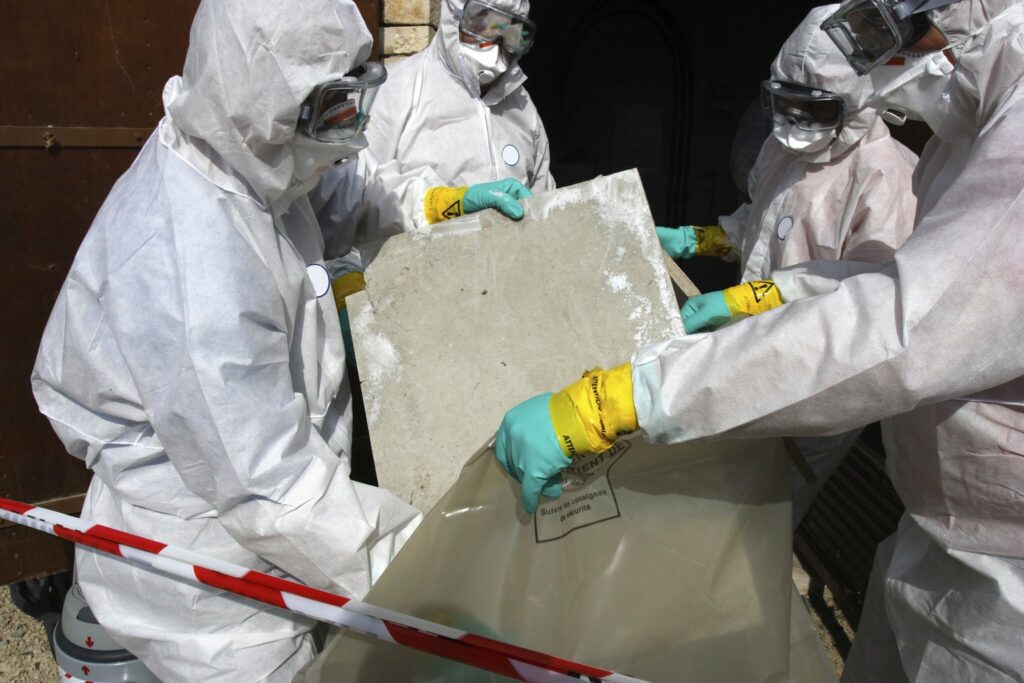
Health Risks of Fiberglass
Fiberglass is a common material used in insulation, construction, and other industries. While it is generally considered safe, there are some potential health risks associated with exposure to fiberglass.
Respiratory Irritation
Fiberglass can cause respiratory irritation when its fibers are inhaled. This can lead to symptoms such as coughing, wheezing, and shortness of breath. In some cases, it can also cause more serious respiratory problems like bronchitis and asthma.
Skin Irritation
Fiberglass can also cause skin irritation when it comes into contact with the skin. This can lead to symptoms such as itching, redness, and rash. In some cases, it can also cause more serious skin problems like dermatitis.
Eye Irritation
Fiberglass can cause eye irritation when its fibers come into contact with the eyes. This can lead to symptoms such as itching, redness, and tearing. In some cases, it can also cause more serious eye problems like conjunctivitis.
Overall, while fiberglass is generally considered safe, it is important to take proper precautions when working with it to avoid potential health risks. This includes wearing protective clothing, gloves, and eyewear, as well as ensuring proper ventilation in the work area.
Health Risks of Asbestos
Asbestos is a naturally occurring mineral that has been used in various industries for its heat-resistant properties. However, prolonged exposure to asbestos fibers can lead to serious health risks.
When asbestos fibers are inhaled, they can get lodged in the lungs and cause scarring and inflammation. This can lead to a variety of respiratory problems, including coughing, shortness of breath, and chest pain. In addition, asbestos exposure has been linked to lung cancer, mesothelioma, and other types of cancer.
The health risks of asbestos exposure depend on several factors, including the length and intensity of exposure, the type of asbestos fibers, and individual susceptibility. However, even low levels of exposure can be dangerous, and there is no safe level of asbestos exposure.
It is important for individuals who work with or around asbestos to take proper precautions, such as wearing protective clothing and respirators, to minimize their risk of exposure. In addition, buildings that contain asbestos should be properly maintained and monitored to prevent the release of fibers into the air.
Overall, the health risks of asbestos exposure are serious and should not be taken lightly. It is important for individuals to be aware of the risks and take steps to protect themselves and others from exposure.
Regulations on Fiberglass and Asbestos
Fiberglass and asbestos are two distinct materials, but they share some similarities. Both are used in construction and insulation, and both have been linked to health problems. However, the regulations on these materials are different.
Asbestos is a known carcinogen and has been banned in many countries, including the United States. The use of asbestos is heavily regulated, and products containing asbestos must be labeled as such. In addition, workers who handle asbestos must be trained and protected from exposure.
Fiberglass, on the other hand, is not considered a carcinogen and is not regulated as heavily as asbestos. However, fiberglass can still cause respiratory problems if inhaled, and workers who handle fiberglass should take precautions to avoid exposure.
In the United States, the Occupational Safety and Health Administration (OSHA) sets regulations for the use of both asbestos and fiberglass. OSHA requires employers to provide a safe working environment and to train workers on the proper handling of hazardous materials.
Overall, while fiberglass and asbestos share some similarities, they are regulated differently due to the health risks associated with each material. It is important for workers and employers to understand these regulations and take necessary precautions to protect themselves and others.
Conclusion
In conclusion, while fiberglass and asbestos share some similarities in appearance and usage, they are two distinct materials with different properties and health risks. Fiberglass is a man-made material composed of glass fibers, while asbestos is a naturally occurring mineral made up of long, thin fibers.
Fiberglass is commonly used in insulation, construction materials, and consumer products due to its low cost, durability, and insulating properties. It is generally considered safe when handled properly, although it can cause skin and eye irritation if not properly protected against.
Asbestos, on the other hand, has been linked to serious health risks such as lung cancer, mesothelioma, and asbestosis. It was widely used in insulation, construction materials, and other products before its health risks were fully understood. As a result, it has been banned or restricted in many countries around the world.
It is important to note that while fiberglass is a safe alternative to asbestos in many applications, it is not a complete replacement. Asbestos is still used in some specialized applications where its unique properties are necessary, such as in high-temperature insulation.
Overall, it is important to be aware of the potential health risks associated with both fiberglass and asbestos, and to take proper precautions when working with these materials. Proper handling, protective equipment, and disposal procedures can help minimize the risks and ensure a safe working environment.


